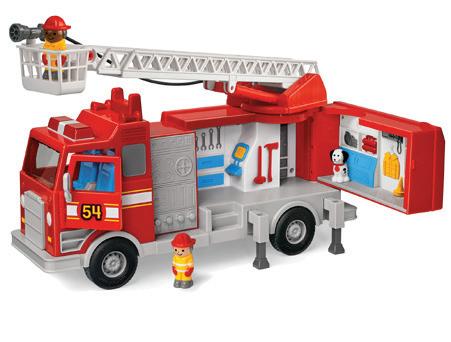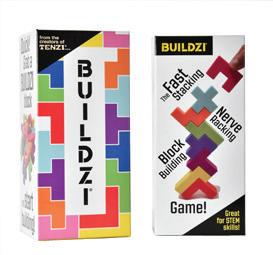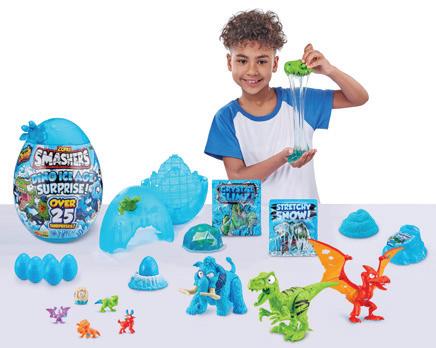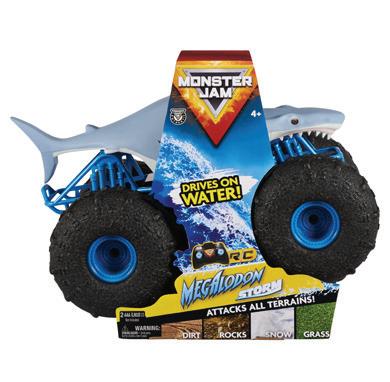
21 minute read
Consistency in Parenting
Importance of the
Consistencyin parenting
Consistency is a critical component to good parenting. By instituting rhythms to your days, as well as responding similarly to conflict or bad behavior, you assure a child that certain factors in life are dependable. Making a concerted choice to remain calm, cool and collected when speaking to your child is an investment in your relationship that can help greatly with building emotional bonds. Likewise, providing structure and routine helps children process information and determine how to implement it within the given boundaries.
And believe it or not, consistency is just as important for parents. Establishing your ground rules gives you freedom to rest within them. With consistent boundaries in place, you can refer to your own guidelines for appropriate discipline and household
management, avoiding the mistake of making overly harsh or rash decisions in the heat of the moment. Everyone wins when a sense of order prevails in their days and relationships.
How to Be Consistent (Especially When You’re Not)
Two factors often plague parents as they try to establish consistency for their families. The first is a feeling of failure before the job has even begun. For a parent with a Type B personality, the goal of consistency may seem unachievable because to-do lists and personal planners aren’t even personally appealing, let alone translatable to imposing on others. Just how can you enforce a routine on a child if you can’t even manage one for yourself? On the other side of the spectrum is the highly-organized individual

who loves having systems and personal goals in place but struggles to translate that into something that isn’t overwhelming for the rest of the crew. The only thing worse than no sense of order to your day is having a meticulous plan that’s not realistic for the life that your family leads! Thankfully, both can be remedied.
Being consistent doesn’t mean you have to be governed by the clock. Instead, it can be as simple as establishing a rhythm that works best for you. An afternoon routine might solely consist of a quiet hour when your kids come home from school, a time where they can relax by reading, taking a nap or listening to an audiobook in their room. Nighttime routines can be as simple as brushing teeth, putting on pajamas, reading a book and singing a song before lights out. Sometimes a visual reminder, such as a picture chart on the fridge, can help a child process what activity comes next. Habits take time to build—it’s said to take close to a month to form new ones and only three days to break them—so be gracious with your children and yourself if you find yourselves in the early stages of building or revamping a routine.
Consistency in Discipline
Nothing is more confusing to a child than inconsistency in discipline. If one day Mom yells at an infraction and another day she gives it a free pass, a kid is left wondering what’s acceptable and what’s not. This uncertainty can produce several challenging behaviors in children, ranging from passivity to aggression. For others, a lack of predictability can cause extreme anxiety. Being consistent with consequences and boundaries is assuring to children because it lets them know what they can expect. That doesn’t mean your little cutie won’t test your boundaries. In fact, many times kids push and prod to see whether Mom or Dad will cave. But when testing is met with loving firmness, kids feel a sense of safety and reassurance. Make sure you and your spouse are on the same page when you establish your ground rules for family life and put those values on display so both you and your children can refer to them when a situation arises. Having a chart with consequences for certain behavior means your kids will quickly know what to expect in your home, so you’re not left to fumble for a response in the heat of the moment.
Parenting is hard work, and oftentimes, expediency trumps predictability. If you want a child to clean his room and he balks at it, it’s easier to clean it up yourself than to train him to persevere until the job is finished. Being consistent requires more of your time and energy initially, but the effort is an investment in your child’s character formation. That investment pays dividends into your relationship, which will strengthen as he grows and matures. And ultimately, it will build confidence and security in a child to do what’s right, whether you are there or not.
Consistency Produces Freedom
Allowing kids to make choices and gain independence is an integral part of a healthy childhood. When you or other caregivers (such as grandparents or babysitters) are inconsistent with the amount of freedom you give, kids can get confused, and a power struggle can ensue. Make sure you maintain an open line of communication with other caregivers so you all remain consistent with the amount of liberty you give. For instance, when homework needs doing might not be up for negotiation but choosing which subject to tackle first can be up for grabs. Other choices include picking out what to wear, choosing a snack or deciding which book to read at night. Similarly, giving children input in how they would like to contribute to family chores helps everyone out. If chores are put on rotation, hold a family meeting and discuss who would like to feed the dog, take out the trash or vacuum the bedrooms next. Being able to have some degree of autonomy within a secure framework produces happy, healthy kids.
Lauren Greenlee is a boy mom hailing from Olathe. She falls into the selective type-A camp—a personality that loves lists and planners but equally cherishes the freedom to go on an adventure at a whim.
THE ART OF THE Apology

We all know as adults how hard it is to admit wrongdoing. But don’t you think that apologizing for that wrongdoing is even worse sometimes? Why is apologizing so hard?! According to PsychologyToday.com, apologizing “requires humility and temporarily reduces one’s self esteem.” For some people, apologizing simply feels too close to humiliation … and no one likes to feel humiliated. Some even see apologizing as a sign of weakness. Sometimes our pride gets in the way of an apology, and other times we may not really be sorry for our behavior, so the apology may not be heartfelt. Regardless of whether you like to do it, learning to apologize is a skill that everyone should know. Let’s find out more about what apologizing can look like for our children.
As parents, we need to understand there is a developmental continuum for apologizing—meaning you need to have the age and stage of your child in mind when teaching apologies. Although very young children can repeat the words “I’m sorry,” they have no actual understanding to accompany the apology. In effect, the exercise is pointless. Parents.com suggests focusing on teaching children 2 and under what the rules are, because by learning them, they will have less to apologize for later. By nature, 2-year-olds do not care or understand how other people are feeling. In this situation, you can simply make an apology for your child and move on. Children ages 3-5 are developmentally all about “me” and have a hard time putting themselves in someone else’s shoes, but parents still need to point out how others might be feeling based on their actions. Around the age of 6, children start to better grasp the idea of right and wrong and how their choices can impact others. They may not jump for joy about apologizing, but the reasoning behind it will sink in a bit more. Older children often have more invested in relationships so are more apt to make amends. They’re also capable of offering other ways to make a situation right, ways young children can’t come up with.
When it comes to the art of the apology, some appropriate steps can guide us through the process. Boys Town social curriculum recommends the following: • Look the person in the eye. • Use a sincere voice. • Say, “I’m sorry for…” • Don’t make excuses for your choices but do explain how you can do better next time. • Offer to compensate or make the situation right. • Thank the other person for listening.
Apologizing doesn’t come naturally to children, so be available for specific coaching and helping your child find the right words. Children need language and guidance on how to accept an apology too. I can remember a counselor explaining to my first grade class that when a person apologizes to you, you do not have to say, “That’s okay.” Oftentimes, what happened is not okay. What you can encourage children to say instead is “I accept your apology” or “Thanks for telling me.”
Children take in so much of what they see and hear around them, so remember, we must set the example. Do not be afraid
to apologize to your own children. This both sets a good example and shows kids that making mistakes is part of being human—and it shows kids how to handle it when they do. Katie, an Overland Park mom, says, “I think teaching children the art of apology comes from modeling it yourself. If I say something to hurt my children’s feelings or raise my voice if my son is not behaving, I always go back later and apologize to my child. It is important to show vulnerability and admit to your child that you have made a mistake. Apologizing teaches your child to take responsibility for their actions and also models empathy by realizing you hurt someone and need to make it right.”
When it comes to helping children learn to apologize, parents must remain patient and committed because it is a gradual learning experience that will take time. Rome wasn’t built in a day … and staying the course will only add to the amazing little (or big!) person you are raising!
Julie Collett writes from Overland Park where, even as a grown-up, apologizing is hard! • Give some space and time before walking children through an apology. No good can come when emotions and tempers are still high.
• We must be mindful as parents not to force our children to apologize. This will only lead to insincere apologies, embarrassment and possible shutdown or acting out. Encourage your children to apologize and help coach them through it.
• The power behind the apology is the sincerity of the words. It won’t hold much weight if the behavior never changes.
• If your child won’t apologize, don’t stress. You have the option to do it for him and then handle your child later away from the situation.

Favorite Books Come to Life
We all know reading is a fundamental skill all students must master to
make the rest of school easier. We also know that this fall, school may look a little different. Here are some favorite children’s books and authors, as well as ways to make those stories come alive with supplemental activities to occupy your children for a few more minutes throughout the day.
Age: Preschool
Sandra Boynton is a great author to introduce your littles to with her fun rhymes and illustrations. Barnyard Dance, The Going to Bed Book and Blue Hat, Green Hat are a few of our family’s favorites. Create story-themed bins with props your children can use to act out the tales with a parent, older sibling or even on their own. For example, a bin of plastic farm animals can help kids learn animal sounds or sort colors. Another bin for building dressing skills might hold things like a button snake, zippers and other fasteners. Storyline.online has excellent videos that let your children listen to others read aloud to them—which means more guilt-free screen time to me!
Another title is Drawn Together by Minh Lê and Dan Santat that was brought to my attention by Anna Francesca Garcia, mother of a teen and a former education librarian for the Kansas City Public Library. She says, “This is an amazing story of a boy who visits his grandfather. Since they speak different languages, the boy feels lost. However, via the interaction between the art they create, they find their common ground. Their different styles meld beautifully. I love how this book, with very minimal language, depicts the relationship between a grandfather and grandson, some of the immigrant experience and the power of art.” There is a phenomenal activity book on Books.Disney.com, and Garcia especially likes the activity on pg. 8.
Age: Elementary
As your early elementary students begin to figure out reading, Dr. Seuss and Mo Willems are great authors to stock up on for your own home library through classroom Scholastic book orders, the Dr. Seuss Book Club from EarlyMoments. com, or ThriftBooks.com. If borrowing books is more your cup of tea, simply place them on hold from your local library. Dr. Seuss’ use of simple words, rhymes and repetition is why he is a classic and beloved author. The accessible language patterns give your student confidence in being a reader. Mo Willems is a beloved author as well because his books are simple and comedic. A multitude of resources can be found on ThePigeonPresents.com.
A couple of favorite early reader book series in our house include The Princess in Black by Shannon Dale and Dean Hale as well as Flat Stanley by Jeff Brown. The Princess in Black series tells the story of Princess Magnolia, who changes into the Princess in Black when she needs to fight monsters. These are funny, action packed books about a courageous princess. Flat Stanley tells about Stanley Lambchop who has a bulletin board fall on him, leaving him only half an inch thick. He is able to experience life and help out in unique ways thanks to his flatness. Find activities at ThePrincessInBlack.com and FlatStanleyBooks.com.
As your child progresses, series such as Dinosaur Cove by Rex Stone and Junie B. Jones by Barbara Park will appeal. Dinosaur Cove is the story of Tom and Jamie who find a secret entrance into a world of dinosaurs. Visit Scholastic.com for further activities for Dinosaur Cove. Junie B. Jones is a hilarious series based on the 6-year-old title character who makes reading a fun activity to do! Check out JunieBJones.com for a plethora of activities to add to your child’s enjoyment of the series.
Roadl Dahl has been a favorite author of mine since I was a little girl, and I have since passed down my original copies to my children to read, as well as reading several aloud because I wanted to revisit the stories. Favorites like James and the Giant Peach, Matilda, and The BFG never lose their attraction. Head on over to RoaldDahl.com for ways to add on to these beloved stories.
Middle Grades
My 10-year-old daughter is in this sweet spot. This year I specifically sought out more diverse books by authors of color to help her grow up with a more expansive world view. That sounds heavy, but reading is a great way to dip your toes into different cultures and gain some empathy through stories.
Author Renee Watson has many books with Black protagonists in Black settings, and one title my daughter read Sunshine. It has been compared to the Ramona Quimby series and is more for the younger crowd, but more advanced readers could zip through some of these and still get something out of them thanks to the books’ themes.
The First Rule of Punk by Celia C. Pérez is another suggestion from Garcia. “As soon as I finished this book, I gave it to my daughter to read. She was just slightly younger than the main character, Malú, and the empowering message of being yourself is one that I wanted to share,” she says. “Throughout, there are zine pages created by our protagonist, and this helps give us insight into how she is processing her life. As a divorced mom, I loved the example of responsible, loving co-parenting that Malú’s parents have. Also, ever since reading this, we have both been intrigued by independent vinyl stores like the one that Malú’s dad runs.” Here is a step-by-step guide to creating a zine, as written by the book’s author: ReadBrightly.com/ how-to-make-zine/.
Young Adult (YA)
With the Fire on High by Elizabeth Acevedo is a Garcia suggestion for older readers. She says, “Acevedo tells a compelling story. I listened to the audiobook which shows how responsible the protagonist, Emoni, is. She is a teen mother who lives with her grandmother. She works very hard and is an aspiring chef. Her journey to use her talents to grow into the woman she is becoming is inspirational, but the text feels authentic—never preachy.” This may inspire your teen to try her hand at some new recipes too.
The Hate U Give by Angie Thomas is a fantastic book that dives into the themes of racism, justice, activism and identity that are all at the forefront this year. I highly recommend buddy and enjoyed was her book Ways to Make
reading this with your teen to have some important discussions throughout. Then on a lighter note, if your family or teens have succumbed to all things Hamilton as most of us have, American Royals by Katherine McGee may be a fun look at an alternate version of American history based on the premise of “What if America had a royal family?” This could lead to some fun discussions on American history.
Read-Alouds and Audiobooks for the Whole Family
A couple of favorite series that both my eldest and I have read are Harry Potter by J.K. Rowling and Narnia by C.S. Lewis. Both of these series are tremendously popular and have many activities you can find with a quick search. Do a family read-aloud time or have multiple children listen to these tales together while you catch up on work or house tasks. Both series can be enjoyed again at different ages as well.
The Underlander Chronicles by Suzanne Collins and The Land of Stories by Chris Colfer (from Glee) are both amazing series with wonderful audio versions. Often, we listen to the first book on audio in the car while running errands and traveling to extracurricular activities, and then the kids want to continue reading the rest of the series on their own.
An avid reader, I find book podcasts to be a great source of recommendations for not only myself, but for my kids also. Shows such as What Should I Read Next?, The Currently Reading Podcast, Literally Reading and Read Aloud Revival have episodes geared toward the younger readers, and there are even children’s book podcasts such as Book Club for Kids to keep reading fresh and engaging for your children this year. Oftentimes, we celebrate finishing a read-aloud book by watching the movie together. You could even encourage your children to write to their favorite authors. Check out other ideas at ReadingRockets.org.
the BEST GIFTS for the holidays

Purrfect Counting Purse Soft, multi-textured fabric cat purse comes with loads of personality, accessories and learning content. Learn, pretend and music modes add playful variety. Ages 6+ months. Store.LeapFrog.com
BY ELENA EPSTEIN DIRECTOR OF THE NATIONAL PARENTING PRODUCT AWARDS
For more product reviews, visit NAPPPAAwards.com

Go! Go! Cory Carson Cory’s Stay & Play Home Explore every room with Cory, Mama and Chrissy Carson mini characters in this 360° playset. Built just for cars with a pretend bathtub car wash complete with scrub brush, ramps and more. Ages 2+. VTechKids.com

Eloise the Elephant This adorable pal is knit with a luxe marl gray yarn and has the sweetest baby trunk and little tasseled tail. As part of the cuddle + kind family, each doll sold provides 10 meals to children in need. Ages birth+. CuddleAndKind.com The Animal An unboxing truck where the Animal can claw and climb over anything in its way— including its own box. The Animal can be placed back inside its box, and the entire unboxing can be repeated over and over again. Ages 4+. SpinMaster.com


Ice Hopper A glitter-filled take on a classic toy perfect for active play. Available in four dazzling colors. Ages 6+. Kess.co
Batman Launch and Defend Remote Control Batmobile Race your Batmobile around Gotham City and launch Batman into action. This iconic vehicle comes with an exclusive 4-inch Batman figure. Ages 5+. SpinMaster.com


Real-Action Fire Engine Features a ladder that extends to more than 2 feet high and rotates a full 360 degrees, a retractable fire hose and more. The truck opens to reveal an exciting command center with all kinds of authentic details built right in. Ages 3+. LakeshoreLearning.com


Pets Alive Frankie the Funky Flamingo Let’s get groovy with Frankie and her hilarious neck twirling, wing flapping movements, while getting down to three funky jams. Includes a surprise flamingo egg with a baby flamingo. Ages 3+. Zuru.com
Veterinarian Practice with Pets Lovingly treat a variety of animal patients back to health. Includes x-ray image hanging on the wall, examination table, doctor’s case and much more. Ages 3-8. Schleich-s.com

DinoMazing Egg Decorator Explore your inner paleontologist with this dynamic craft kit that’s two activities in one. Decorate and then crack open the shell to discover a surprise collectible covered in colored slime. Ages 3+. Eggmazing.com

BUILDZI The fast-stacking, nerveracking, block-building game. Be the first to build your tower, but don’t let it tumble. Ages 6+. ILoveTenzi.com Rainbocorns Sweet-Shake Surprise For the first time, Rainbocorns sings, talks, speaks and repeats. Sporting iconic jelly hearts filled with goodness and delight and six new characters, each offering 15 layers of fun surprises. Ages 3+. Target.com

Silly Skaters Unicorn Inflatable Ride-On Toy by Kid Trax Make playtime fun and fanciful with this soft, inflatable unicorn on light-up roller skates. Ages 1-3. KidTraxToys.com

Artsy Fartsy From dragons to dog farts, not much is off limits in this fast-paced, hilarious game where you draw, guess and steal clues. Ages 10+. ArtsyFartsyGame.com

FailFix Takeover the makeover and create headto-toe transformations. Comes with a new outfit, face and hair tools. Dolls available in diverse styles and body types. Ages 6+. MooseToys.com


Spirograph Scratch & Shimmer Create amazing art in a whole new way. The glitter gears and wheels can be used with your own pens and markers on regular drawing paper as well $Ages 8+. PlayMonster.com

Smashers Dino Ice Age Surprise Smash, fizz, build and battle. The giant blue dino egg comes with more than 25 different icy surprises inside. Follow the arctic scratch map through different Ice Age-themed compounds to uncover each piece of your Smash-O-Saur. Ages 4+. Target.com Drone Home Launch aliens down the ramps, racing to land inside the drone so they can fly home. Watch out— there’s a delay once you make it in, so others can knock you out. Ages 8+. PlayMonster.com Blue’s Clues & You! Really Smart Handy Dandy Notebook Learn what’s new with Blue and Josh! Includes 14 light-up app icons to introduce colors, counting, shapes, weather, health and hygiene, and phone, music and mail apps for pretend play. Ages 2+. Store.LeapFrog.com
Back to the Future: Dice Through Time It’s up to you to help Doc and Marty repair the space-time continuum. Jump in your time machine, complete events, return items and help restore temporal order. Ages 10+. Target.com

Monster Jam Megalodon Storm A remote control vehicle that can dominate water AND attack land. Performance tires allow you to conquer any terrain—water, dirt, rock, snow— while performing 360-degree spins and wheelies. Ages 4+. SpinMaster.com Target.com

Scribble Scrubbie Pets Grooming Truck Features a working spray pump that easily allows kids to wash their pets and doubles as a storage solution. Ages 3+. Crayola.com










